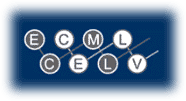
State Schools In Norway
Svein Håvåg
![]()
Context
Norway is a vast country. Maybe not so big, but never the less 2500 km
long. A fact that clearly indicates how difficult and expensive it might
be to have people work together on a national level.
Background
The country consists of 19 counties, which have the responsibility for
upper secondary education. The 435 municipalities are assigned the responsibility
of running the primary and lower secondary schools.
The standards for schools are set by legislation. They are pointed out as principles and guidelines for education given for primary and secondary schools, as well as for adult education. The different levels have their own curriculum standards
There are very few private schools in Norway. Approximately 98% of the comprehensive schools (primary and lower secondary) are public. As for the upper secondary schools, the public sector accounts for approximately 96%.
There is no competition between the two types of schools. The private schools are rather regarded as a supplement.
The country has 18 Directorates for Education. These are assigned the responsibility of inspecting schools. This is rarely done. My school has had an inspection just once during the last 24 years. Our Directorate however, executes its responsibility by monitoring school activities through a constant dialogue with the officials from the municipalities and through annual reports
Norway has a unified educational system; this means that every learner has the right to have an education in accordance with his/her ability level. This is a demand on the individual teacher, which very often might be difficult to meet. In many cases it is practically only valid for the learners with special needs.
As far as student evaluation is concerned, failing a class is not an option in comprehensive school. Formal evaluation is given from the 8th grade.
Quality in language teaching/learning
(For a more thorough understanding of language teaching and learning in
Norway, please have a look at this site: www.ecml.at/documents/members.)
The National Centre for Educational Resources produces tests for English
and Norwegian to assess student ability on different class levels. These
tests are normative.
German, French and Finnish are also offered as second foreign languages
in the lower secondary school. These subjects are optional, and taking
them gives no credit, except from the actual competence the learners gain
from taking the course.
The National Centre for Educational Resources has initiated a programme to develop materials for assessment. This is meant to be a help for the teacher as well as for the individual learner in assessing the different elements for learning/teaching a second foreign language. This material will probably be published in January 2003.
It is not an easy task to teach a second foreign language in a Norwegian lower secondary school. With no formal grading, no credit given and few lessons offered, it is no wonder many of the teachers "hit the wall". As two Norwegian researchers point out in a newly published research report (Heike Speitz (Telemarksforskning) and Beate Lindemann (University of Tromsø): The Situation for the Second Foreign Language in Norwegian Secondary Schools.(Norwegian edition): It must be difficult for a 13 year old, sitting in the classroom studying difficult language tasks, to watch his or her friends going off to take part in optional activities, for example, motor cross, tractor driving or different types of out door activities.
Quality in schools
The Norwegian schools are encouraged to have a sharp focus on quality.
They are supposed to develop their own plan for quality assurance. The
way this is done may vary quite a lot from one school to another.
On a personal note …
I think that the involved participants in Norwegian schools find it
interesting to work with developing quality.
I myself am very much looking forward to taking the impressions from this work shop back home and sharing them with my network.
